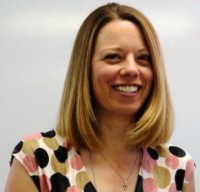Mass media that unites
Conservative religious people decry what they see as a liberal media unsympathetic to their worldview. Liberal Protestants and Catholics wonder why the media deploys the umbrella term “Christians” but seems to mean mostly people who sound nothing like them. People of other faiths may wonder why they rarely appear in the news except to represent extremism of some form. It seems as if the media aids rather than ameliorates the growing polarization of the American populace.
Eighty-nine years ago an interfaith group of activists and religious and political leaders aimed to use the nascent radio and movie industries to bring people of different faiths, races, and ethnicities together. The presidential campaign of New York governor Al Smith, the first Catholic to run for the office, heightened nativist and anti-Catholic sentiments around the country, which colluded with anti-Semitic attitudes. In response, a 1927 conference formed the National Council of Christians and Jews for the Advancement of Justice, Amity and Peace (NCCJ). Nationally recognized leaders like Jane Addams, Theodore Roosevelt, Louis Marshall, and Henry Morgenthau served on the organization’s advisory council.
The NCCJ made its stated goal to “publish the fact continually before the American people that the country’s best leadership is on the side of understanding and good-will between people of divergent kinds and creeds.” It aimed to achieve its objective through educational campaigns at college campuses across the nation, clergy and theological students, local goodwill councils, and conferences.
But the group recognized that its most valuable means of reaching the American public was through the press, the motion picture industry, and radio—the latter two of which were powerful new modes of mass media. In 1934 the Jewish American journalist Louis Minsky helped NCCJ achieve this goal with the formation of the Religious News Service (RNS). Independently operated but affiliated with NCCJ, RNS sought to counter the often parochial and biased reporting on religion found on the airwaves and in the press with authoritative and impartial coverage of domestic and global religious events.
RNS was most successful with the press. Over the 50 years that NCCJ owned RNS, the service distributed more than 68,000 fully captioned photos to newspapers, journals, and other publications, along with press releases, stories, and radio scripts. The photos were a rich effort to harness the power of images to reshape public consciousness and attitudes. RNS photos captured intimate and public religious expressions of faith in the U.S. and overseas; they also focused on important religious leaders like Pope John XXIII, Billy Graham, and Martin Luther King Jr., on political figures engaging in the religious world, and on domestic and global movements that shaped the 20th century.
Through RNS, many Americans may have had their first glimpse of a celebration of Purim or a saint’s feast day. Non-Protestant neighbors are now less exotic to the majority Protestant public. The RNS photos enabled Americans to see the rebuilding of Europe after World War II, the wars in Asia that followed, the civil rights movement, and the peace movement through a variety of religious lenses. These photos, with their carefully bias-free captions, sought to counter tribalism in our national conversations, to “lay aside . . . disfiguring prejudices which obstruct our vision.”
In 1983, NCCJ sold ownership of RNS to the United Methodist Reporter. Now known as the Religion News Service, since 2011 it has existed under the auspices of the nonprofit Religion Newswriters Association. NCCJ gifted its files, including its thousands of photographs, to the Presbyterian Historical Society, while the archives of the current iteration of RNS are housed at the University of Missouri School of Journalism. Like NCCJ, which has changed its name to the National Conference for Community and Justice, RNS strives to break down the barriers we build based on race, ethnicity, and creed. Their photos, as well as their articles and blogs, seek to provide places of connection instead of antipathy.
Our weekly feature Then and Now harnesses the expertise of American religious historians who care about the cities of God and the cities of humans. It's published in partnership with the Kripke Center of Creighton University and edited by Edward Carson and Beth Shalom Hessel.





